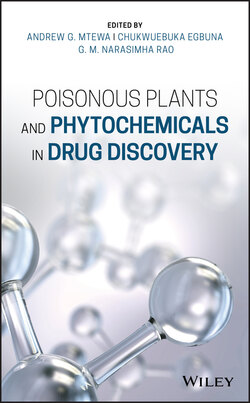Читать книгу Poisonous Plants and Phytochemicals in Drug Discovery - Группа авторов - Страница 35
2.2.1 Biological Characteristics
ОглавлениеPhytotoxins differ in terms of their biological characteristics. These characteristics can emanate from the biology of the responsible endophyte or from the bioactivities that the toxins are reported to exhibit, if already studied. Categorization of phytotoxins based on biological characteristics has been a traditional method of phytotoxin classification [8]. For instance, mycotoxins, secondary metabolites from fungi that adversely affect plants and humans alike, often fatally [11], present a good example of classification based on biological properties. The categorization of mycotoxins and other phytotoxins into two different groups had to be revised. They were made into one group of endophytic phytotoxins after similar biological activities of the toxins, among other characteristics, were noticed [11].
Some wild mushrooms, for example, have phytotoxins such as muscarine and muscimol. When ingested, these toxins cause nausea, confusion, diarrhea, visual challenges, hallucinations, and salivation. Symptoms are key to determining the effects of poisoning and, when their onset is delayed, there is only a very small chance of survival because of delayed intervention.
In the same way, some taxonomic details of the host plant can also be of great significance in categorizing toxins from their respective plants of origin. Chemotaxonomy has already proven to be reliable when markers, such as race, genera, species, and pathotypes, among others, are used to determine the phylogenetic relationships among endophytes responsible for the production of some toxic metabolites with similar traits [1].
